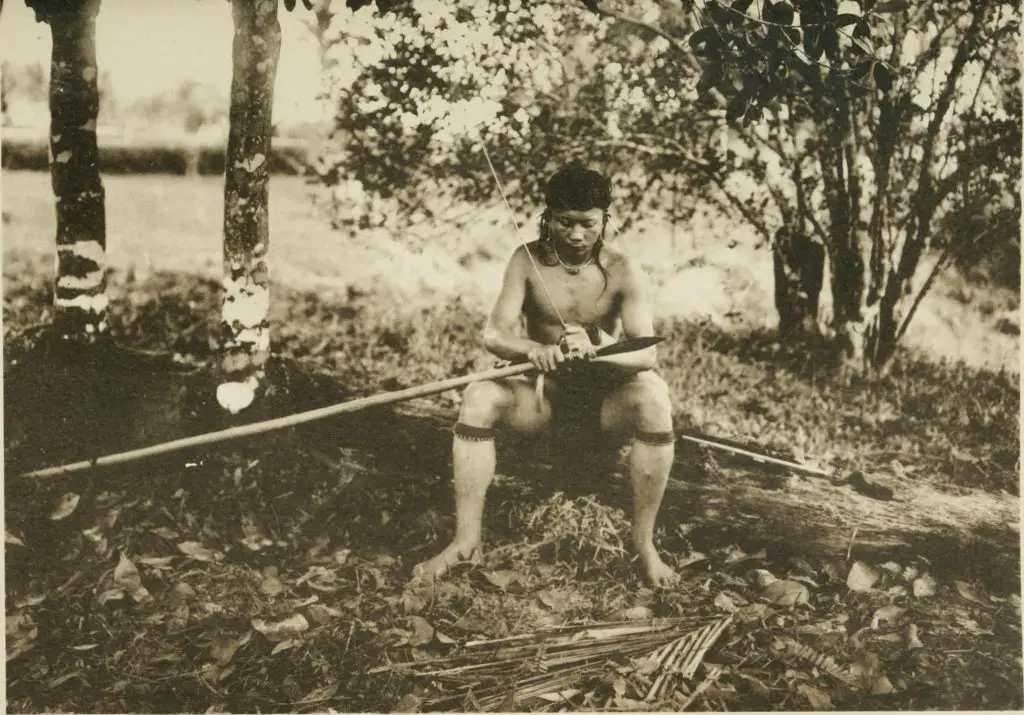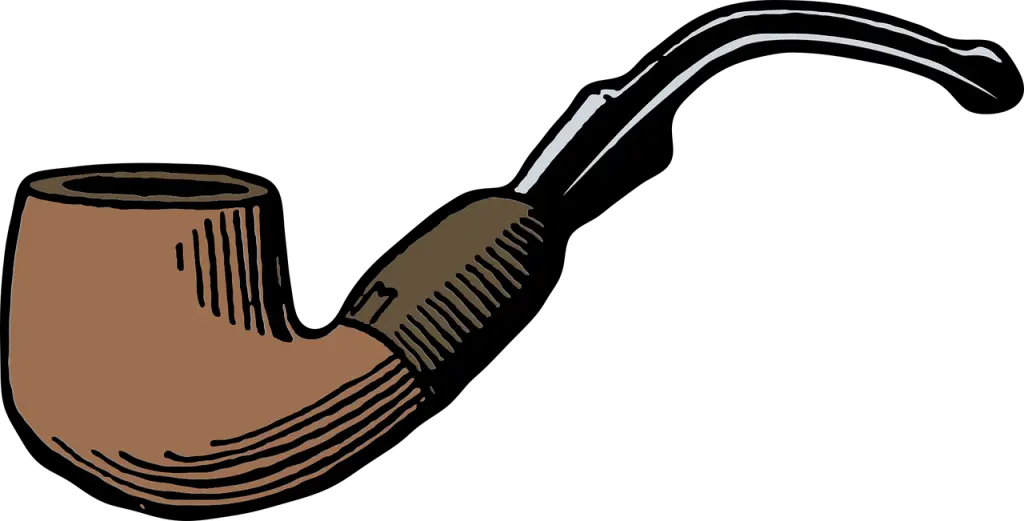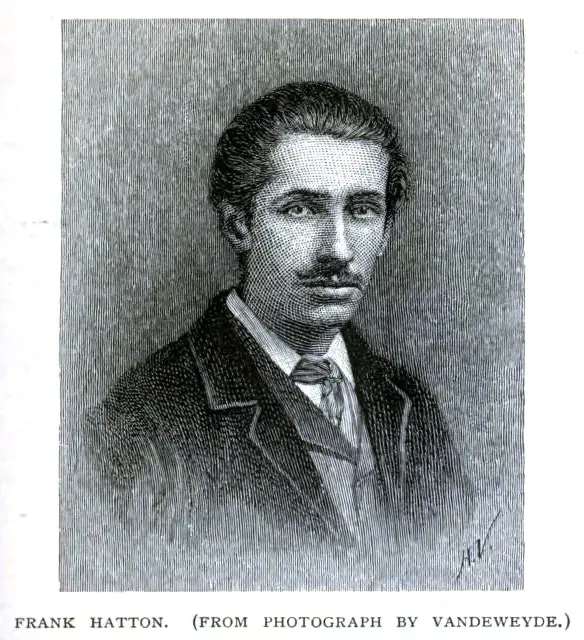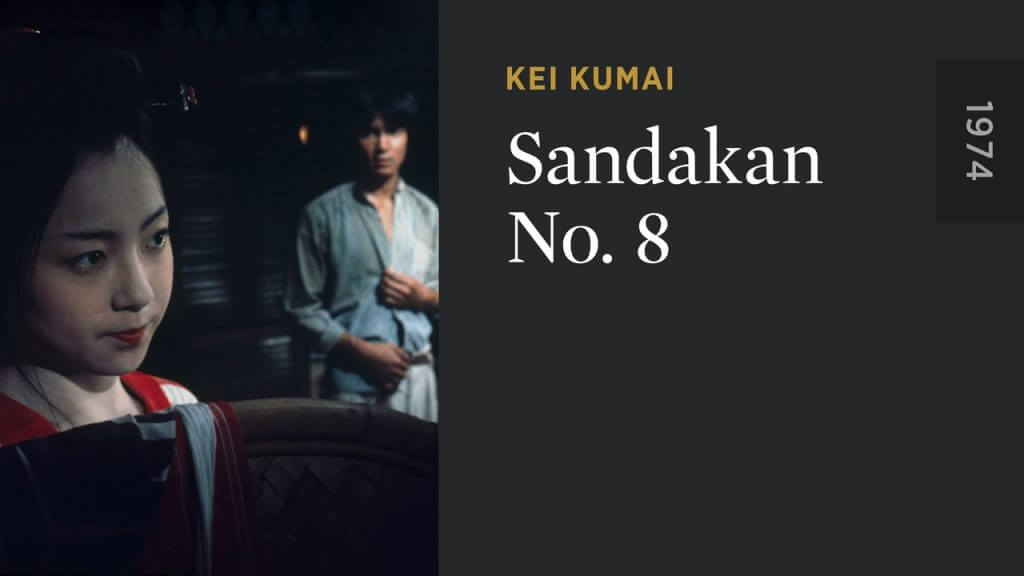‘Sumpit’ or ‘sumpitan’ are what we call the blowpipe or blowgun in Borneo. Some communities in the Philippines and Sulawesi also refer to the blowpipe as ‘sumpit’.
In fact, the first written description of sumpit can be found in the works of Italian scholar and explorer Antonio Pigafetta in 1521 who visited the Palawan people.
He wrote, “”Those people of Polaoan (Palawan) go naked as do the others: almost all of them cultivate their fields. They have blowpipes with thick wooden arrows more than one palmo long, with harpoon points, and other tipped with fishbones, and poisoned with an herb; while others are tipped with points of bamboo like harpoon and are poisoned. At the end of the arrow they attach a little piece of softwood, instead of feathers. At the end of their blowpipes they fasten a bit of iron like a spearhead; and when they have shot all their arrows they fight with that.”
Just like the Palawan’s sumpit, the blowpipe in Borneo commonly has a spearhead attached to the end.

Traditionally, the sumpit is used for hunting and in fights against the enemy. Today, they have become souvenirs or treasured family heirlooms.
Here are five things you should know about sumpit or blowpipe of Borneo:

1.The reason why people of Borneo use sumpit
Have you ever wondered why the Borneo natives chose the blowpipe over the bow when it came to hunting?
According to author Peter Metcalf, in the nineteenth century, ethnologists were curious why people who advanced using iron tools did not adopt or come up with the bow.
The reason lay on topography and landscape. Metcalf wrote “For hunting, they (bows) are ineffective because the dense vegetation seldom allows a clear shot.”
“For pigs or deer, a combination of dogs and spears brings the best results. In regard to small game in the lower branches of trees, such as birds and monkeys, they are easily shot with darts.”
Furthermore, the bow is difficult to shoot at such steep angles. And once you lose your arrows, it is impossible to recover them in the thick Bornean thick jungle.
2.The materials of the blowpipe
Generally, blowpipes are made from bamboo. However, there are some made from wood.
A blowpipe can be made from one to three pieces joined together.
The length of this weapon usually depends on the user. The typical length is about 1.2 to 1.6m and 2 to 3cm in diameter.

3.How to make blowpipe darts
Thick wooden or palm leaf-rib darts are generally used in war.
Also known as damak, the dart is basically a single pointed sharp needle.
The needle is plugged into a cork-lie cushion with bird feathers to allow the blowgun to float constantly toward the target.
Then the tip of the damak is dipped in poison.
4.How to make blowpipe dart poison
According to Herwig Zahorka in his paper “Blowpipe dart poison in Borneo and the secret of its production”, the poison is generally produced from the latex of the Antiaris toxicaria tree which belongs to Moraceae (fig family).
He started, “This latex contains a variety of toxic chemical compounds. The principal toxic agent is a steroid glycoside known as beta-antiarin. A lethal dose is only about 0.1mg per kg weight of a warm-blooded animal.”
On how to make them, Zahorka explained, “To dehydrate the milky latex into a paste, a long, carefully implemented procedure is essential because the steroid glycoside compound is extremely heat-sensitive.
“Therefore, hunters perform the dehydration of the latex by using a young leaf from the small Licuala spinosa palm. The leaf is folded into a boat-shaped container to hold the latex at a carefully determined distance over a small flame for one week. This is possible because the young Licuala leaf is astonishingly fireproof and durable. If the latex were heated at too high a temperature, the glycoside compound would crack and its toxicity would be lost.”
5.How long does it take to kill using the blowpipe
Andrew Horsburgh who was in Sarawak from 1852 to 1856 as a missionary published a book called Sketches in Borneo (1858).
Regarding our local sumpit, he wrote, “The arrows are dipped again into the poison immediately before using and are used in hunting as well as in war, and kill not only birds and squirrels, but also large animals such as orangutans. To animals the poison proves fatal, because they cannot pull the arrow out of the wound; but men suffer little inconvenience from it, as their comrades can always extract the missile before the poison has been absorbed by the system. Squirrels and small animals drop a few minutes after they have been struck, but orangutans frequently clamber about among the trees for a whole day before the poison takes effect upon them as to bring them down.”























